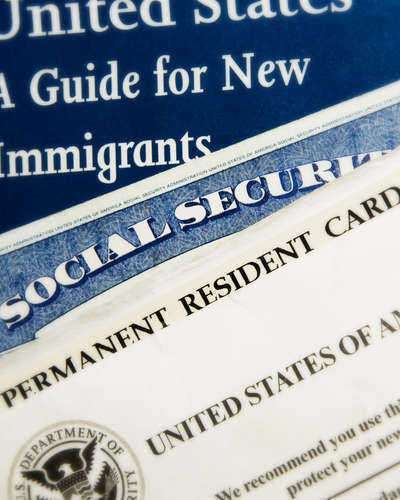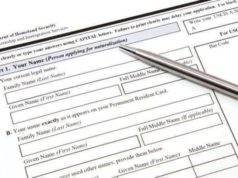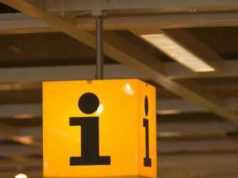
What Does the Permanent Residency Card Look Like?
If you are a non-Canadian citizen and have been approved by the Canadian government to live in Canada permanently, you will be issued a Permanent Resident (PR) card as proof of your status. The PR card is an essential document that will allow you to travel in and out of Canada as a Permanent Resident.
In this comprehensive article, we will explore what the Permanent Residency card looks like, its features and design, the validity period, and how to renew it.
What is a Permanent Residency Card?
A Permanent Residency card is an official document issued by the Government of Canada to individuals who have acquired Permanent Resident status in Canada. The card serves as proof of a person’s status as a Permanent Resident and is essential for those who wish to travel in and out of Canada.
Permanent Resident status is granted to individuals who are not Canadian citizens but have been authorized to live and work in Canada permanently. This status does not give them the right to vote or hold public office. However, they are entitled to healthcare, social security benefits, and other services that are available to Canadian citizens.
Features of the Permanent Residency Card
The Permanent Residency card contains various features that make it unique, authentic and easy to identify. Below are some of the characteristics of the card:
1. Personal Information: The card contains personal information such as the principal holder’s name, date of birth, country of birth, photograph and signature.
2. Card Number: The card has a unique ten-digit number that identifies it as a Permanent Residency Card.
3. Issuance Date: The date the card was issued is printed on the front of the card.
4. Expiry Date: The PR card has an expiration date, after which it cannot be used as a travel document. It is important to note that the PR card does not serve as proof of legal status in Canada after its expiry date.
5. Magnetic Stripe: The card has a magnetic stripe on its back that contains personal information, such as the holder’s name, date of birth and card expiry date.
6. Security Features: The card comes with various security features, including a holographic Canadian flag, a special ink, and microtext that are difficult to replicate.
7. Size and Appearance: The PR card is similar in size and appearance to a standard credit card. It has a white background with a red stripe running horizontally across the middle.
Design of the Permanent Residency Card
The design of the Permanent Residency Card has undergone several changes over the years. Currently, the card has a modern and sleek design, with added security features that make it more difficult to fake or duplicate. The card is made of a durable plastic material that is resistant to wear and tear.
On the front of the card, there is a photograph of the principal holder, along with their personal information, such as name and date of birth. The words Permanent Resident, are prominently displayed at the top of the card, followed by the Canadian flag and the words Canada and Permanent Resident Card in both English and French.
On the back of the card, there is a magnetic stripe, which contains important information such as the holder’s name, date of birth and the card’s expiry date. The card number is also printed on the back of the card.
Validity of the Permanent Residency Card
A Permanent Residency card has a validity period of five years. After this period, the card must be renewed. It is important to note that the PR card does not serve as proof of legal status in Canada after its expiry date. Therefore, it is necessary to renew it to maintain legal status.
How to Renew the Permanent Residency Card
To renew a Permanent Residency card, an individual must submit an application to Citizenship and Immigration Canada (CIC) at least six months before the card’s expiration date. The renewal application includes personal information, as well as proof of residency in Canada. Depending on the individual’s circumstances, other supporting documents may be required.
After submitting the application, the immigration authorities will review it and issue a new card if everything checks out. The process usually takes 60 days, but it can take longer if there are issues with the application.
In some cases, individuals may be asked to attend an interview with an immigration officer or provide additional documentation to support their application. It is essential to ensure that all documents are up to date and that there are no discrepancies in the information provided.
Conclusion
In conclusion, a Permanent Residency card is an essential document for non-Canadian citizens who have been granted the right to live and work in Canada permanently. The card serves as proof of the holder’s legal status in Canada and is required for travel in and outside Canada.
The card has several features, including personal information, a card number, issuance and expiry dates, a magnetic stripe, security features, and a unique design. The card is valid for five years and must be renewed before it expires to maintain legal status in Canada.
Renewing the card can be a straightforward process if all documents are in order and submitted well before the card’s expiration date.
The United States Permanent Resident Card, also known as a Green CardvisaThe actual U.S. Permanent Resident Card is not actually green, though it once was, but instead is white or an off-white shade. The card reads “Permanent Resident Card” across the top in capital letters and lists the card holder’s name in the format “Last Name, First Name” next. Processing down the card, in the next row, there are three key elements. On the left block is a suitable photo of the green card holder. On the right block is a fingerprint of the resident that was taken by a Citizenship and Immigration Services officer and processed by the Federal Bureau of Investigation.
In the middle block is essential human-readable identification information. This includes your nine-digit alien registration number (also known as an A#), the holder’s birth date, an immigration category code, the immigrant’s gender, his or her country of birth, the card’s expiration date, and the first date of residency of the permanent resident.
The bottom half of the green card is devoted to a complex code that is most easily read by computer devices, but can be parsed out by a human processor. There are three lines composed of a mix of code letter-number binaries that serve to identify you, the subject, against official records.
The top line, from left to right, encapsulates this information: whether you are a United States resident or a resident commuter, the country issuing your Permanent Resident Card (presumably, the United States), again, your A number, and your case number. The middle line of the green card, from left to right, contains this data: your birth date, your sex, the card’s expiration date, and your country of birth. The bottom line contains your last, first and middle names and your father and mother’s first initials, space permitting. Any blank spaces are denoted by one or two brackets (“>”, “>>”).
























